Best Jajangmyeon (Korean Black Bean Noodles)
This jajangmyeon recipe delivers the authentic flavors of Korean black bean noodles, featuring thick, chewy wheat noodles enveloped in a rich, savory black bean sauce. A hallmark of Chinese-Korean fusion cuisine, it’s recognized as one of Korea’s most popular noodle dishes — absolutely delicious!
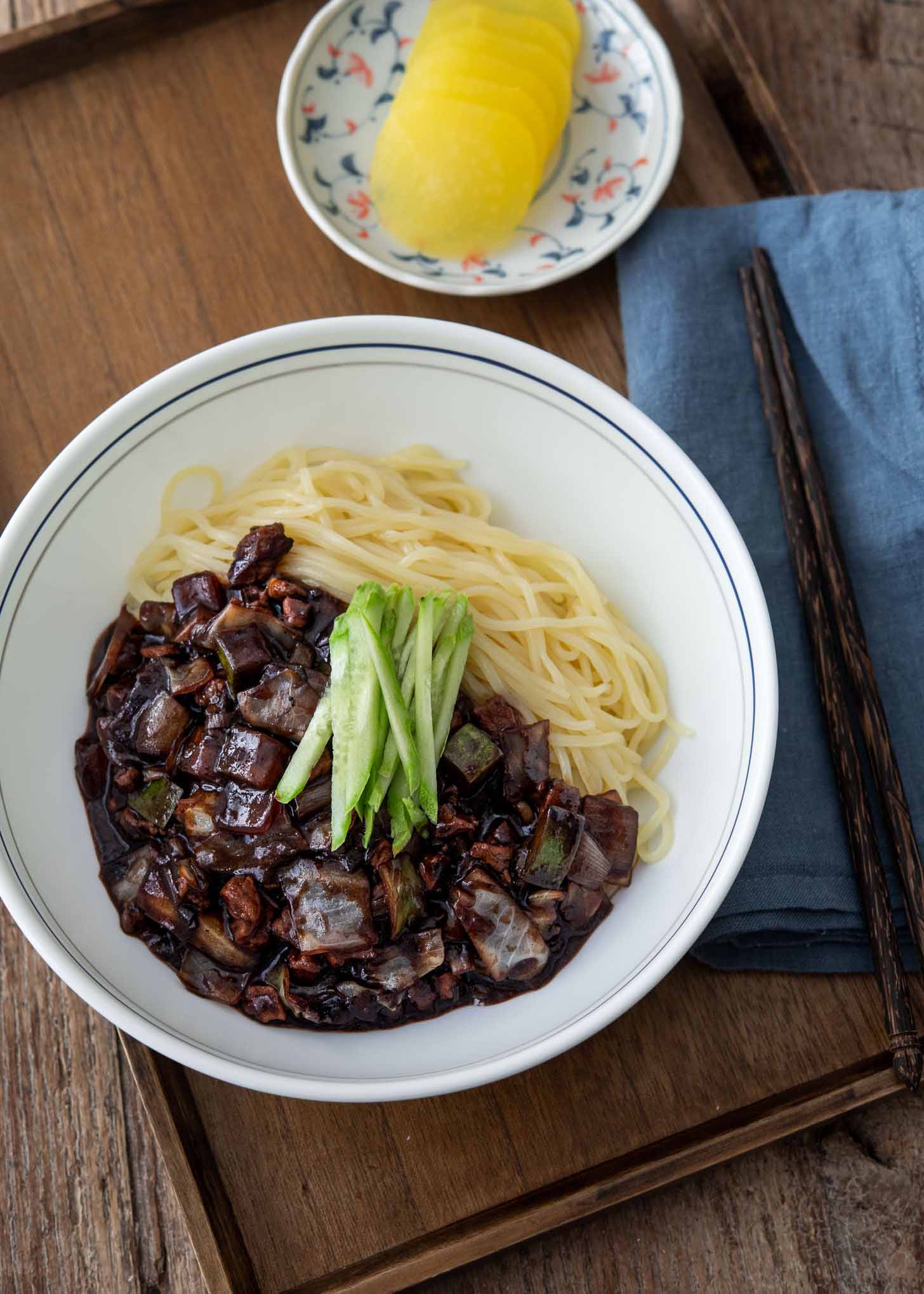
Jajangmyeon holds a special place in the hearts of many Koreans; it’s a nostalgic cornerstone in the realm of Korean noodle dishes. It’s what you eat when you’re celebrating something big or when you just need a little pick-me-up.
Think of it as Korea’s answer to mac ‘n cheese – total comfort food. It usually shows up at the table with buddies like Jjamppong, a kicky seafood noodle soup, and Tangsuyuk, which is basically the best sweet and sour pork you’ll ever have.
But its the thick, chewy noodles slobbered with rich, savory black sauce have universal appeal. Whether you’re revisiting childhood memories or trying it for the first time, this straightforward recipe makes achieving that restaurant-quality Korean jajangmyeon attainable at home.
One bite, and you’ll understand the hype—dark sauce smears that you often see in Korean dramas!
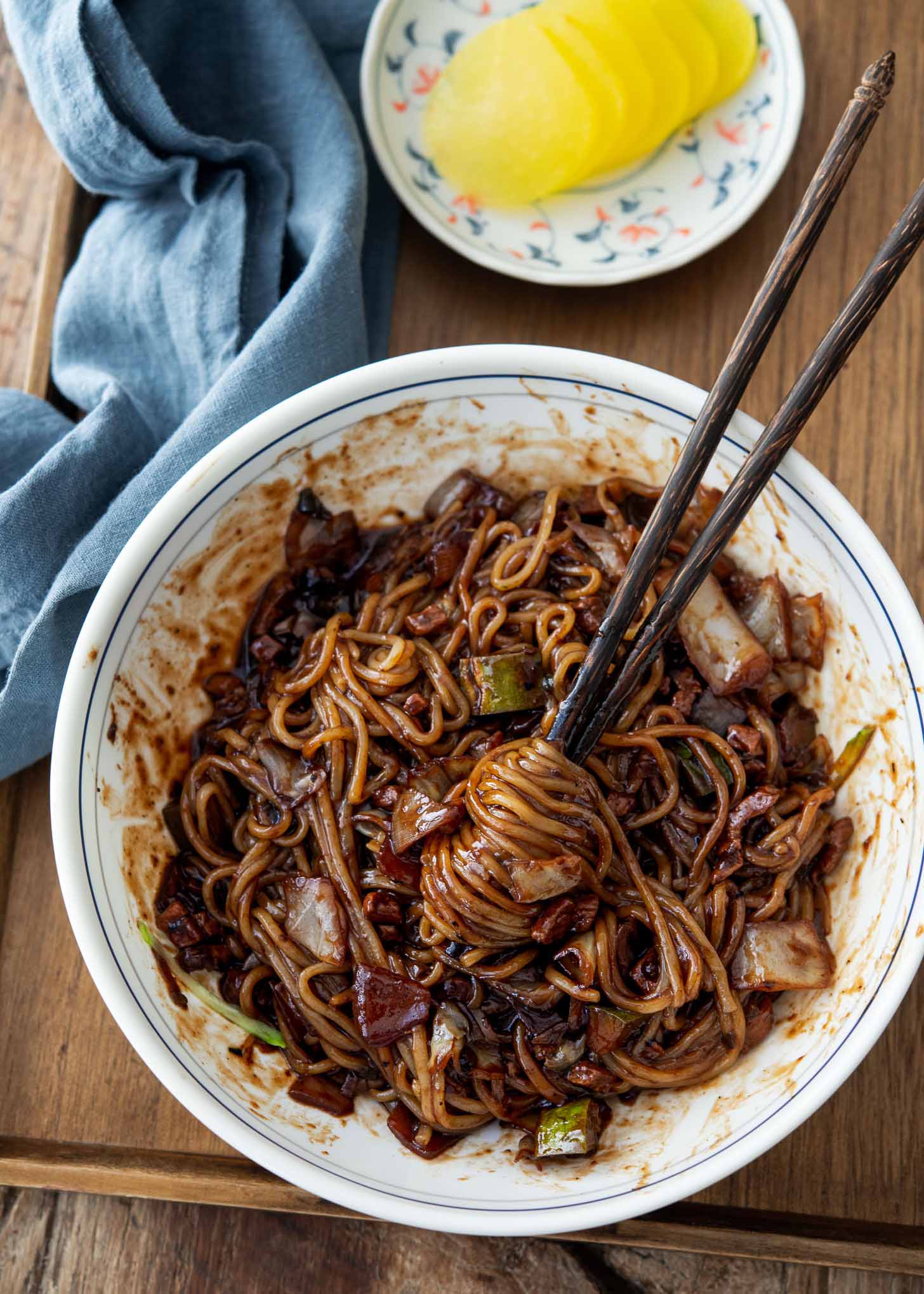
What is Jajangmyeon?
Jajangmyeon (자장면), often referred to as Jjajangmyeon (짜장면), is a popular Korean-Chinese noodle dish. It consists of chewy wheat noodles smothered in a savory sauce made from chunjang (춘장), a fermented Korean black soybean paste.
Jajangmyeon has a deep, savory taste from the black bean sauce that’s a little bit sweet and a little bit salty. The sauce is thick and clings to the chewy noodles. Each bite gives you a hearty flavor that’s really satisfying, kind of like a really good spaghetti but with its own unique Korean twist.
This delicious and satisfying meal has its origins in This delicious and satisfying meal has its origins in but has been adapted to suit the Korean palate, making it a beloved staple in Korean cuisine.
The Origin
Adapted from the ‘Zhajiangmian’ by early Chinese immigrants in the late 19th century, jajangmyeon quickly gained popularity in Korea, particularly in Incheon. Using chunjang, a fermented black bean paste, it became a cost-effective meal for urban workers and a staple at celebrations.
Popularity in Korea:
The rise of Korean-Chinese restaurants in the ’70s and ’80s saw jajangmyeon becoming a staple across Korea. The ’90s brought instant jjajangmyeon, making it easy for anyone to enjoy this dish at home. Today, it’s as common as pizza delivery in the U.S., especially popular on moving days. It also holds cultural significance on Black Day (April 14th), when singles come together to eat jajangmyeon in solidarity.
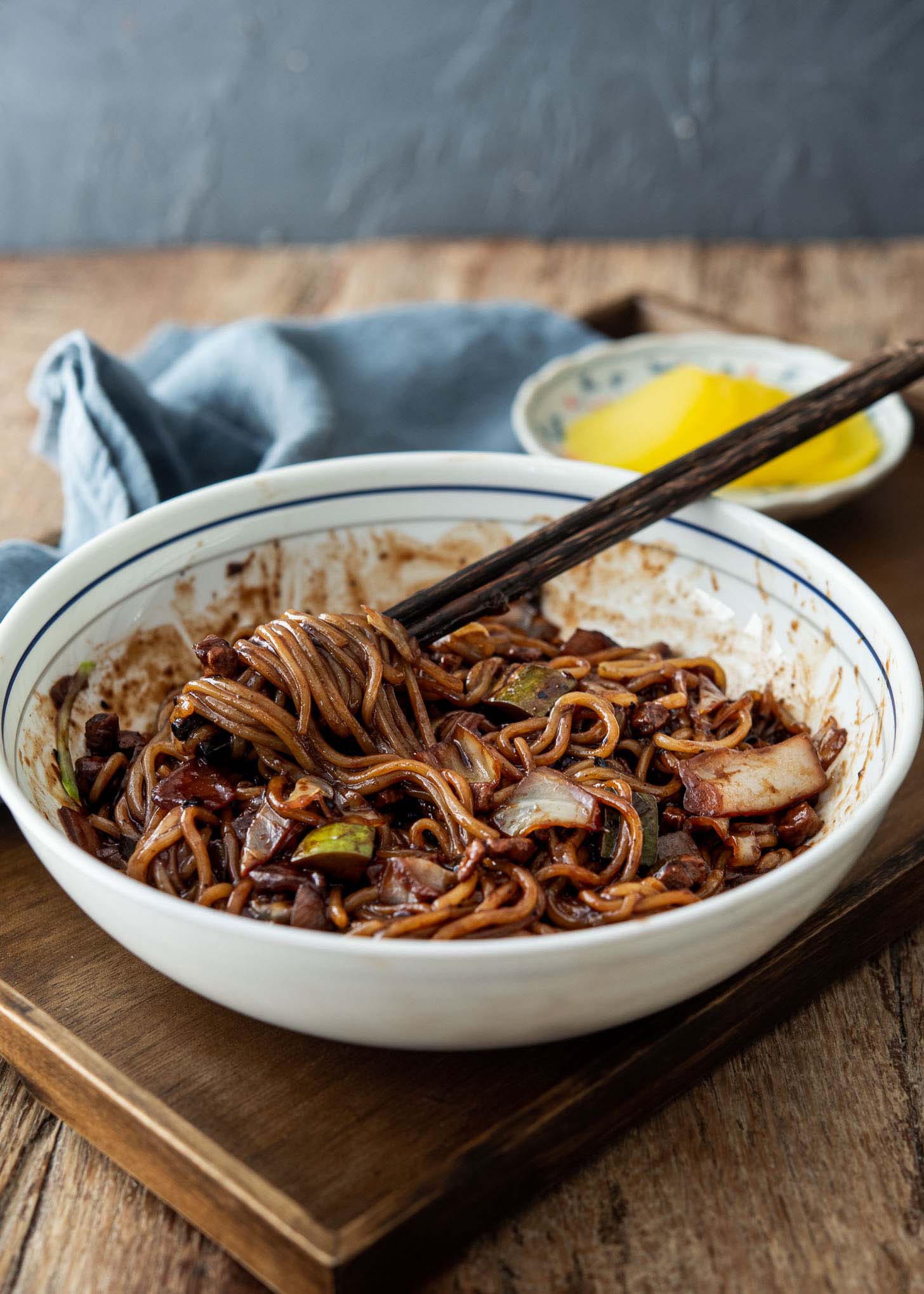
Varieties of Korean Black Bean Noodle Dishes
- Classic Jajangmyeon: This traditional recipe features hand-pulled noodles and a hearty black bean sauce with diced pork and vegetables.
- Seafood Jajangmyeon: A seafood spin on the classic where squid and shrimp bring a taste of the sea to the robust black bean sauce.
- Gan-Jjajang: For those who love a hands-on meal, this version presents a less saucy, more substantial mixture of meat and veggies served beside, not on, the noodles. Mix it up and enjoy the blend of flavors.
- Jjajangbap: Swap out the noodles for rice and experience a whole new way to enjoy the savory thick black bean sauce.
- Instant Jajangmyeon: Perfect for busy days, this quick-fix option from the convenience store is ready with just hot water—a speedy, tasty bite of Korean flavor.
The Noodles
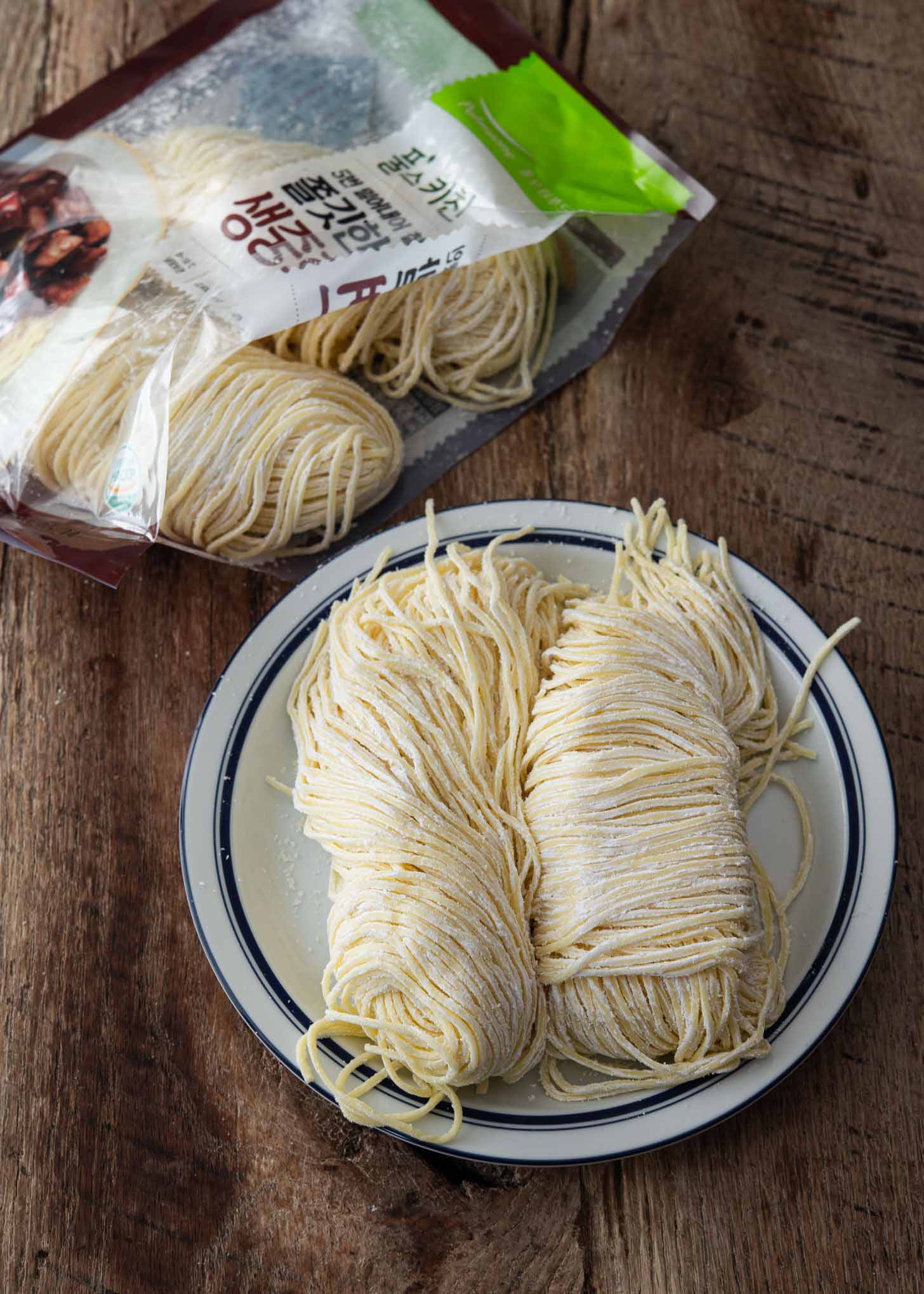
Noodles are key to jajangmyeon’s chewy, satisfying texture. While hand-pulled noodles are the gold standard, various commercial wheat noodles also do justice to the dish’s hearty sauce.
You can buy these wheat noodles easily at most Asian grocery stores, usually labeled as udon and jajangmyeon (우동 짜장면) or jungwhamyeon (중화면).
For the best texture, look for fresh noodles in the refrigerator section of Asian grocery stores or Korean markets. However, if you’re in a pinch and can’t find these specific types, udon noodles or dried spaghetti make acceptable substitutes.
Just keep in mind that dried noodles may not hold their shape as well as their fresh counterparts once cooked.
Jajangmyeon Sauce
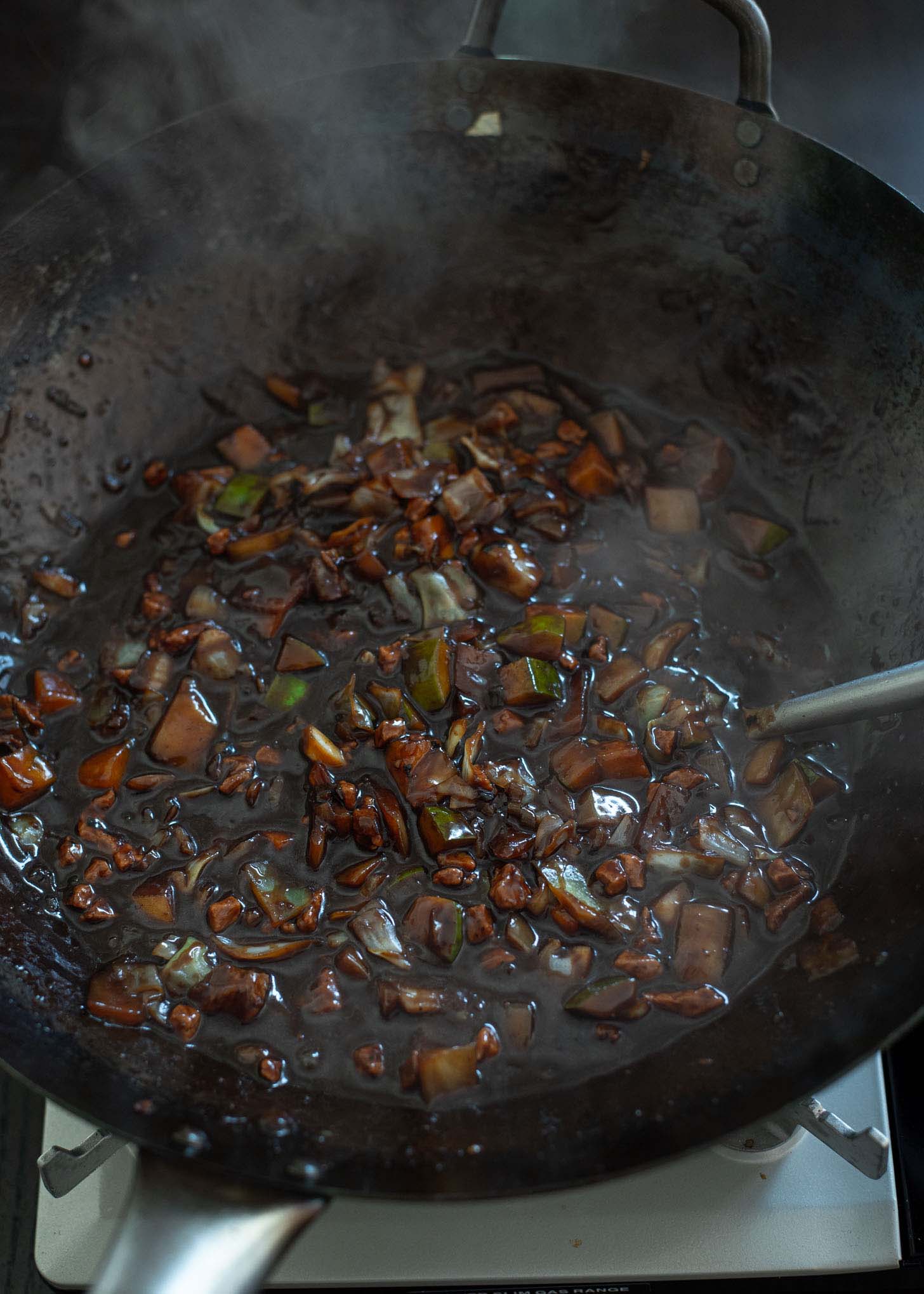
Jajangmyeon sauce is made from a thick, sweet, and savory black bean paste called ‘chunjang.’ It’s stir-fried with diced pork, vegetables like onions and sometimes zucchini or potatoes, and a bit of sugar to add sweetness.
This mixture is simmered until until they are soft and the flavors meld into a rich, thick sauce that’s dark, almost black. This sauce is then poured over noodles to create the classic jajangmyeon dish.
Ingredients List
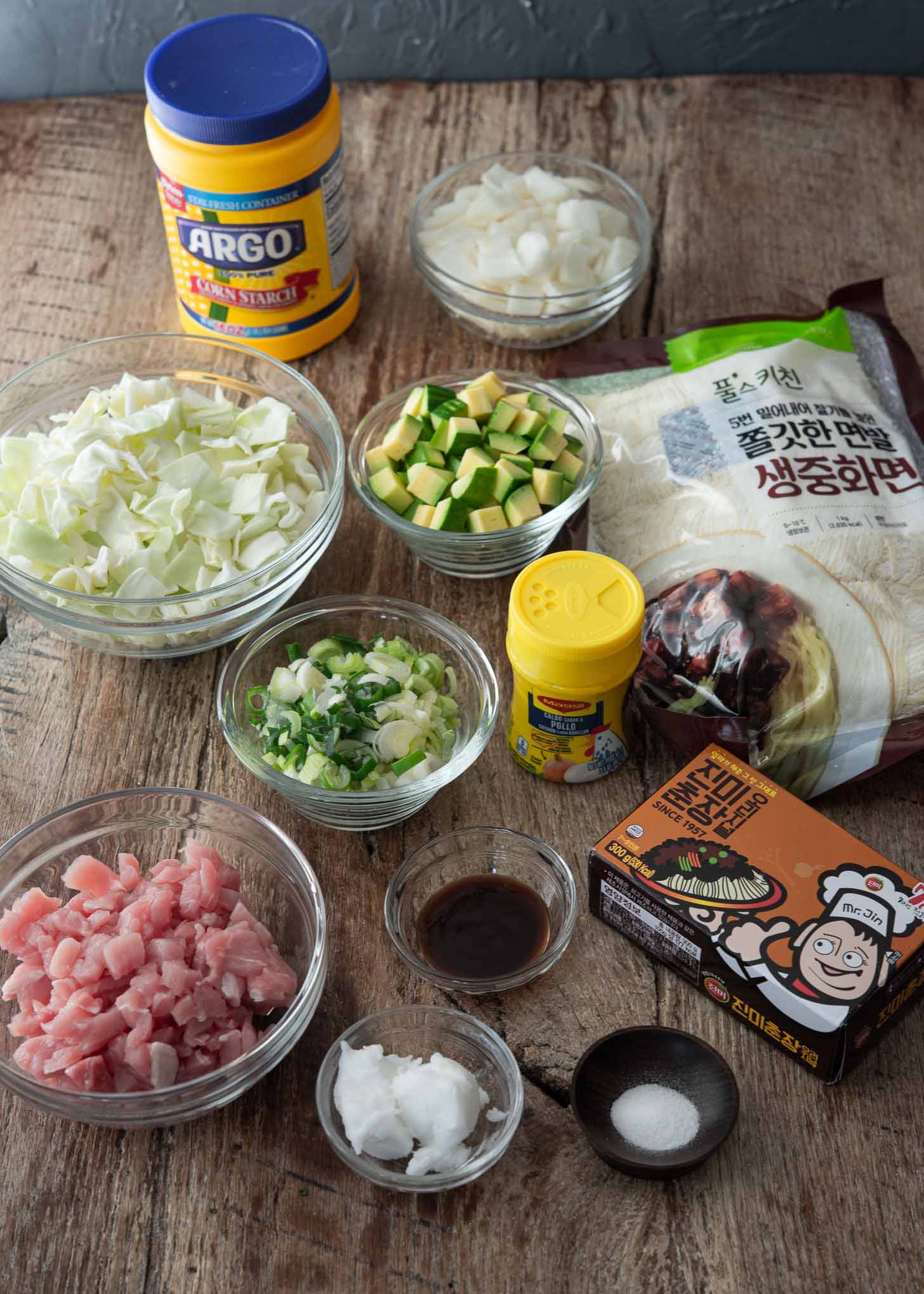
Main Ingredients:
- Pork: Choose loin or shoulder cuts for the best texture.
- Wheat Noodles: Fresh noodles are ideal, but dried noodles works too.
- In a pinch, spaghetti or udon noodles are a suitable alternative.
- Chunjang: The key to authentic jajangmyeon is this Korean black bean paste, Fry it in oil or pork fat to create the rich jajang sauce.
- It is available in jars or packets at Korean markets usually found in the same isle with gochujang and doenjang pastes.
- You can also find pre-roasted chunjang , which is ready to use without extra frying.
- Lard: Use it to add depth to your sauce, or choose oil for a lighter version.
Note: Avoid using Chinese black bean paste; it’s different and will change the flavor of the dish. If you like Chinese black bean flavors, see my recipes for Chinese Beef and Pepper Stir-fry or Twice Cooked Pork.
Additional Ingredients:
- Asian Leek or Green Onion: These bring a subtle sharpness and fragrance to the dish.
- Mixed Vegetables: Typically onions, cabbage, and zucchini are used for their complementary flavors and textures.
- Oyster Sauce: Adds a touch of umami and depth.
- Cornstarch Slurry: A simple blend of cornstarch and water that thickens the sauce.
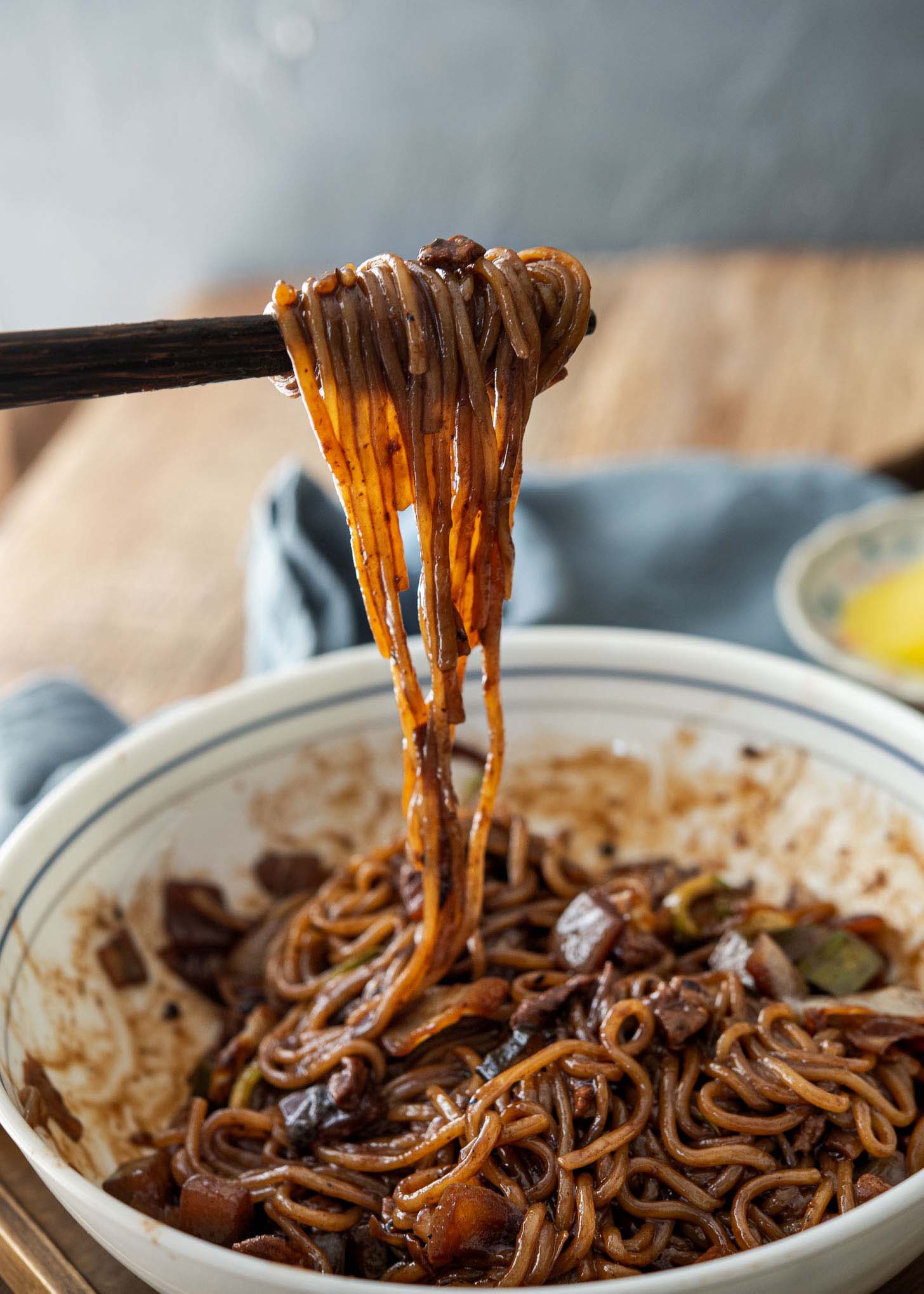
My Best Cooking Tips
- Pre-fry the Chunjang Paste in Oil: To enhance the flavor of the sauce, fry the black bean paste in hot oil for 2-3 minutes.
- This step helps eliminate any bitter taste and creates a more delicious sauce.
- Opt for lard when possible: Using lard in your recipe will contribute a deeper, richer flavor to the sauce.
- If lard is unavailable, you can use oil as a substitute.
- Add a Savory Kick: Use Asian leek or green onion for extra umami. Sauté Asian leek or green onion in lard or oil, along with a little amount of sugar, to impart a savory taste.
- The sugar caramelizes the leek slightly and integrates a smoky flavor into the sauce.
- Use Chicken Bouillon Powder: A pinch can add a complex undertone to the sauce.
- Alternatively, use chicken stock in place of water for the same rich flavor.
How to Cook Jajangmyeon
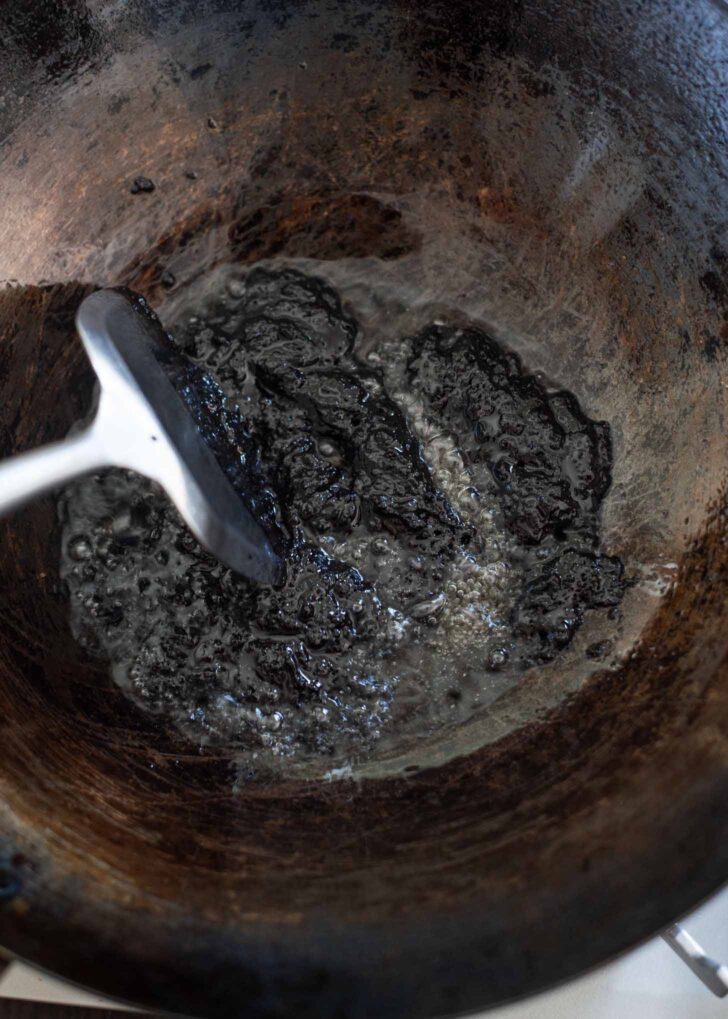
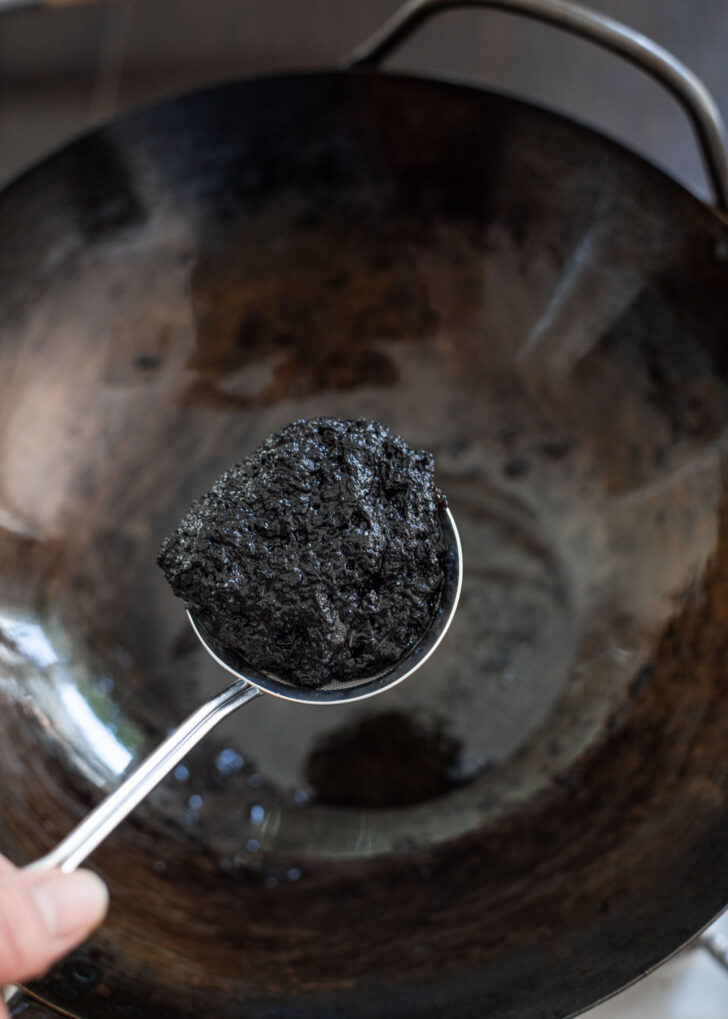
Step 1. Prep Chujang Paste
- Heat some oil or a large skillet in a wok on medium-low heat, then add the chunjang paste. Stir-fry it for 2 to 3 minutes.
- After that, use a fine mesh strainer to transfer the paste to a small plate and put it aside. Get rid of the oil and give the wok a quick clean.
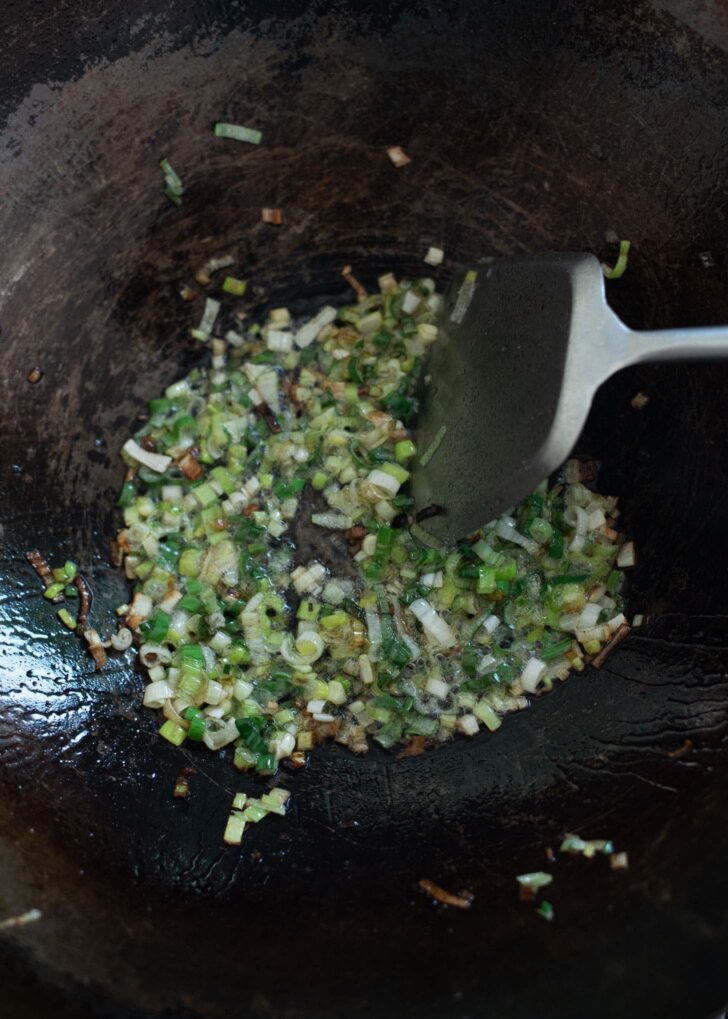
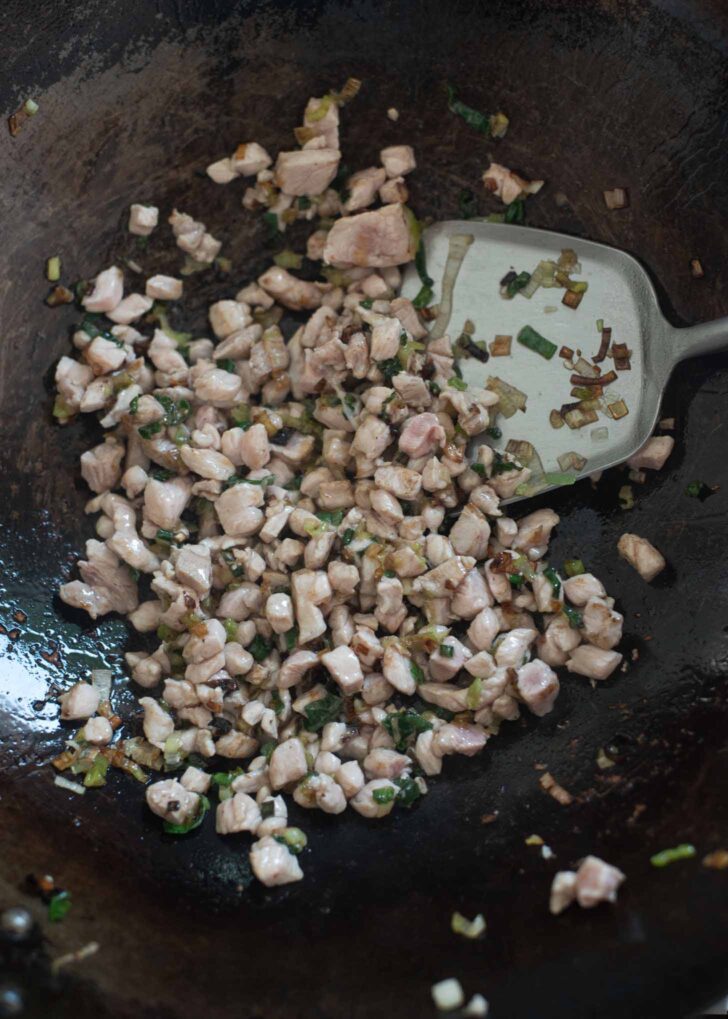
Step 2. Cook Pork and Aromatics
- Warm up the lard in the wok over medium-high heat. Toss in the leek and sugar, stir-frying until the leek begins to caramelize.
- Then, add the pork and continue cooking until it’s fully cooked and no pink remains.
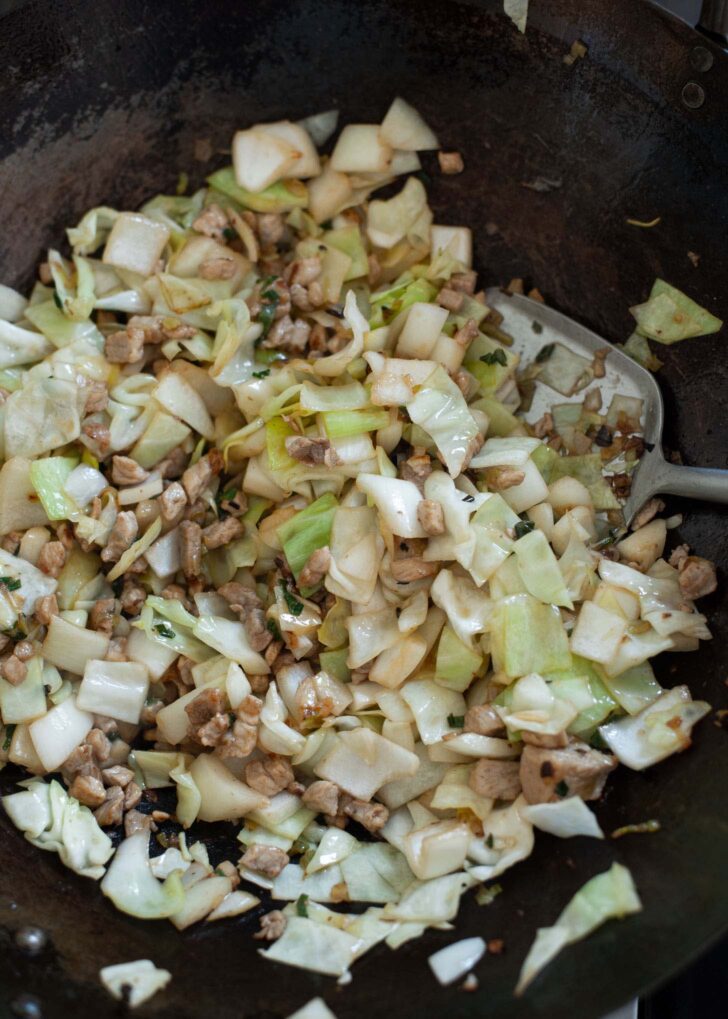
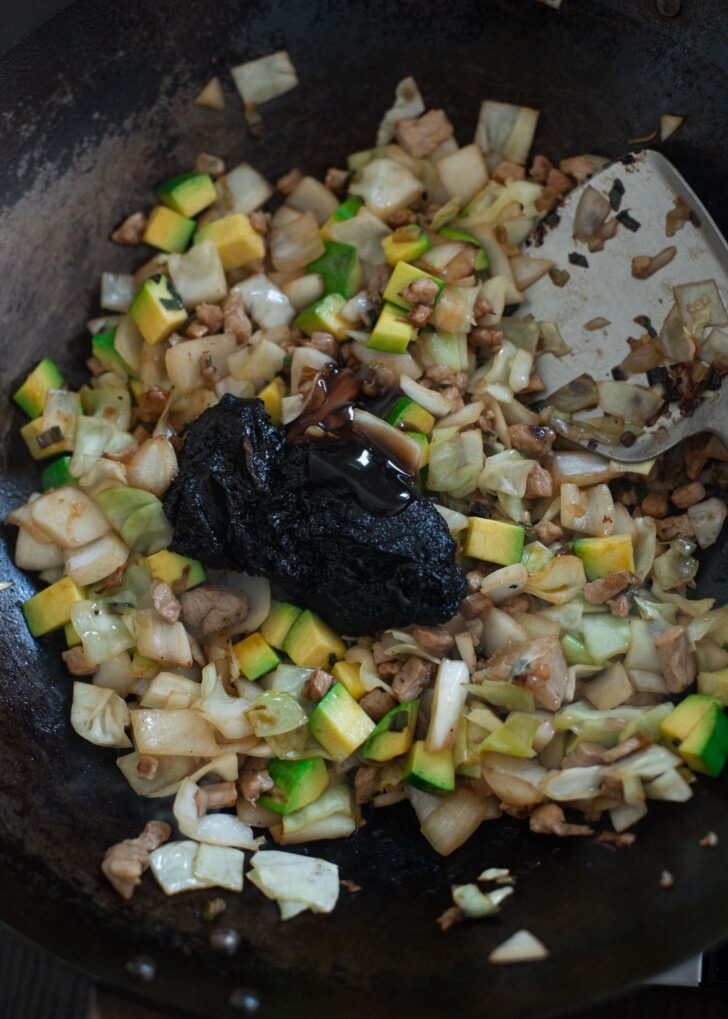
Step 3. Stir-fry vegetables
- Add the cabbage and onion to the wok, cooking them until they start to soften. Throw in the zucchini pieces and give everything a good stir.
- Then, blend in the set-aside chunjang paste and oyster sauce, making sure all the meat and vegetables are evenly coated.
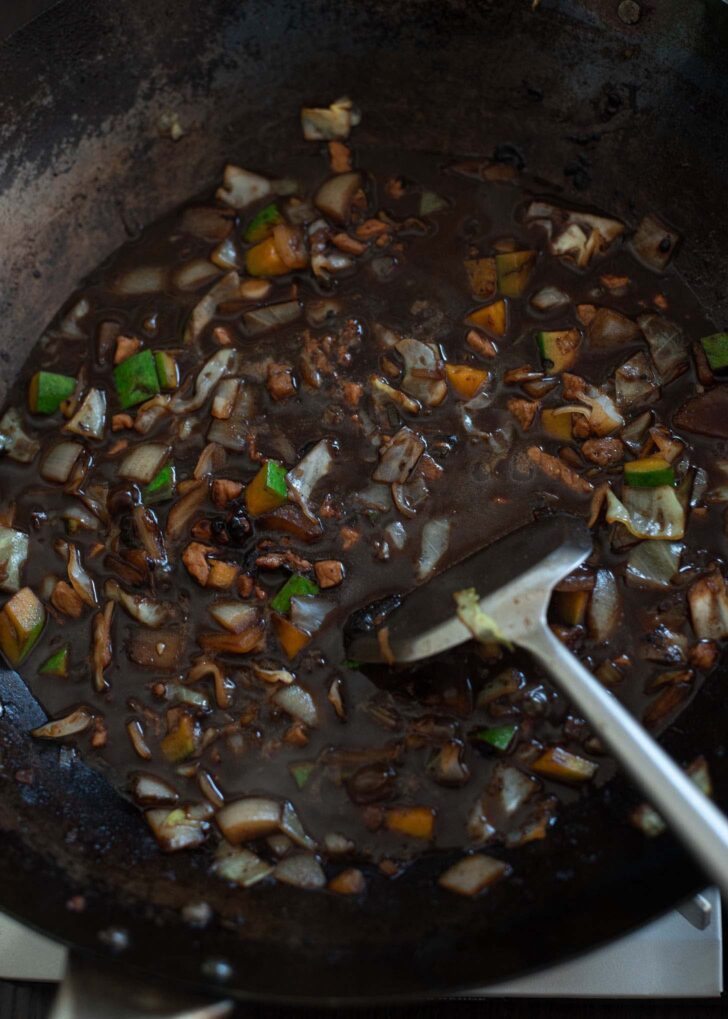
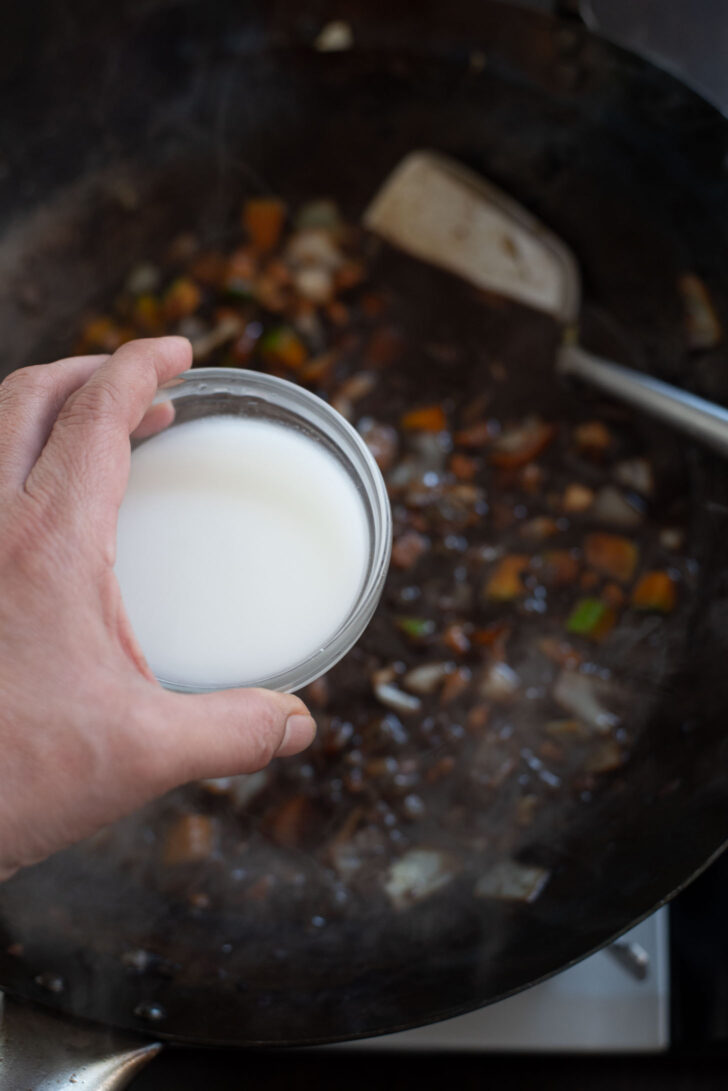
Step 4. Thicken the Sauce
- Add water and chicken bouillon powder to the mixture, stirring thoroughly. Bring the sauce to a boil and let it cook for 3 minutes.
- Then, stir in the starch slurry and cook until the sauce reaches a thicker consistency.
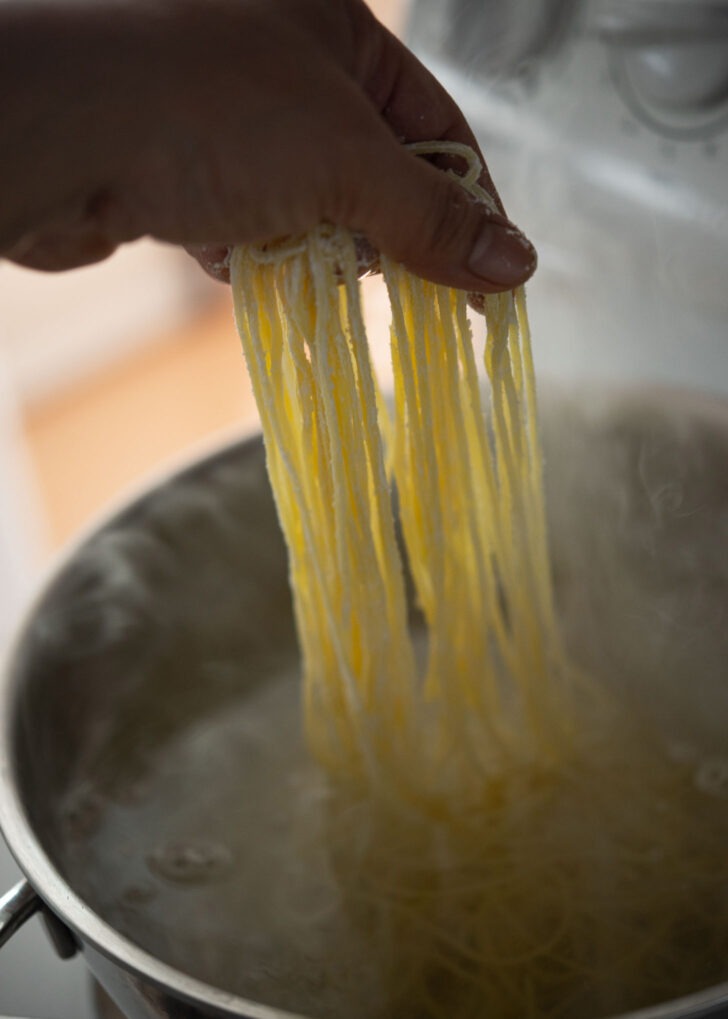
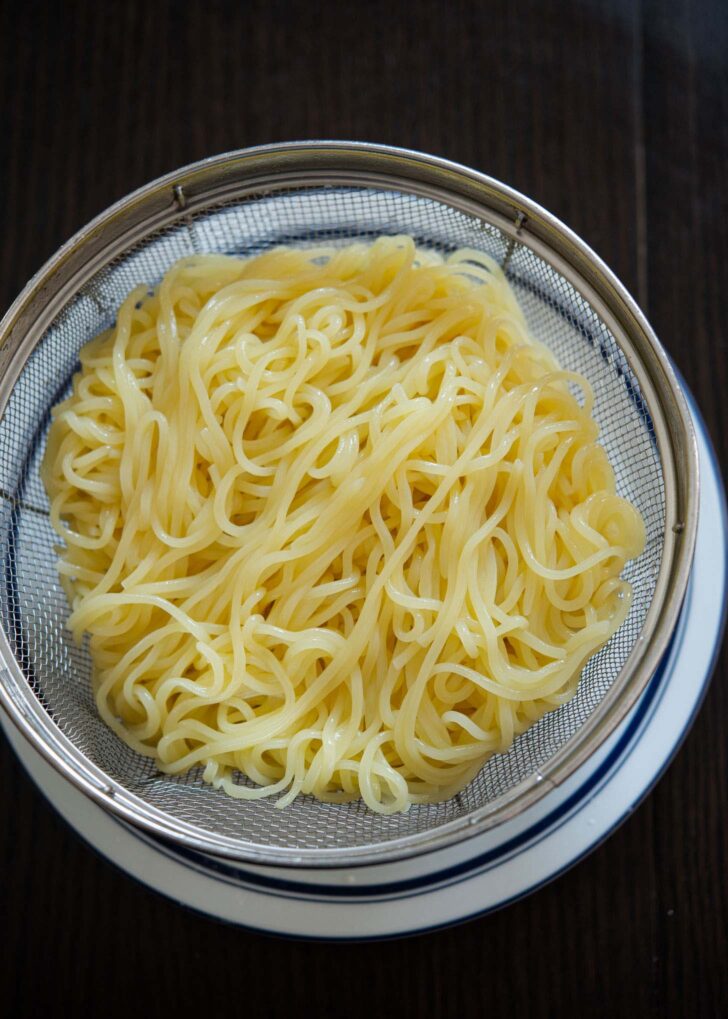
Step 5. Prepare the Noodles
- Boil the noodles in a large pot of water, following the instructions on the package.
- To achieve chewier noodles, add a splash of cold water each time the water reaches a rolling boil.
- Once cooked, drain the noodles and divide them into individual serving bowls. Then, mix in the sauce.
Serving Suggestions
Place a portion of noodles in each bowl and ladle the jajang sauce over them. Garnish with julienned cucumber matchsticks on top of the noodles, if desired.
Alternatively, you can serve the sauce over cooked rice, creating a dish known as jjajangbap (짜장밥).
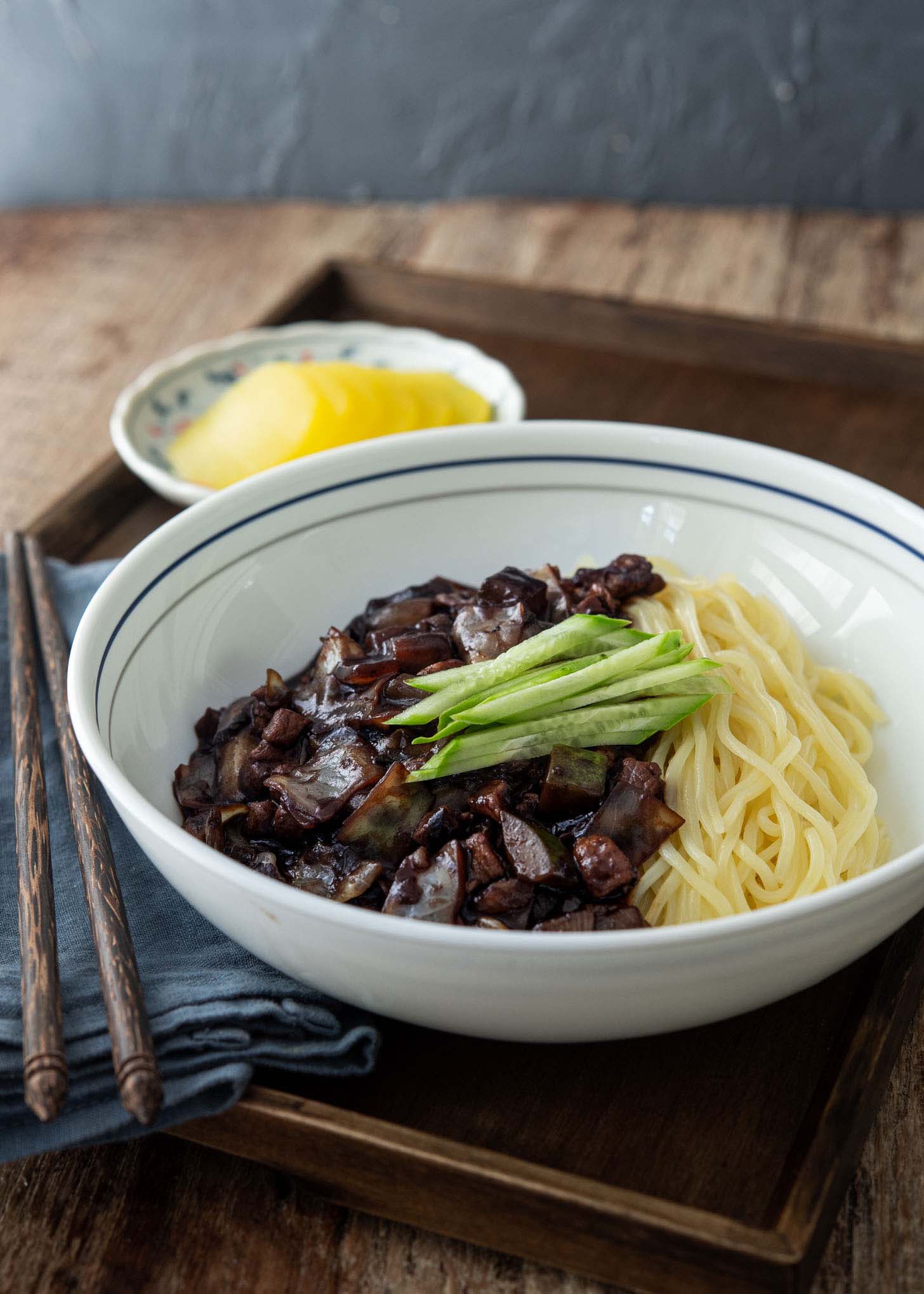
What to eat with jajangmyeon
Enjoying Korean noodles with black bean sauce is often a feast of flavors, and it’s commonly paired with complementary dishes that enhance the experience:
- Danmuji (Yellow Pickled Radish): The sweet and tangy crunch of Asian pickled radish cleanses the palate between bites of the savory noodles. Find danmuji at Korean grocery stores or Asian markets, available either whole or sliced into convenient rounds.
- Pa-Kimchi: A classic Korean kimchi made with green onions, its spicy and fermented flavors balance the richness of jajangmyeon perfectly.
- Tangsuyuk (Sweet and Sour Pork): The crispy, sweet, and sour flavors of tangsuyuk provide a delightful textural and flavor contrast to the creamy jajangmyeon sauce.
- Jjamppong (Spicy Seafood Noodle Soup): If you love a variety of noodles, jjamppong offers a spicy contrast to the sweet and savory jajangmyeon.
Many enjoy adding a fried egg on top of their jajangmyeon, although this is a matter of personal taste. Most importantly, be sure to eat it quickly before the noodles become too soft — soggy noodles are not enjoyable!
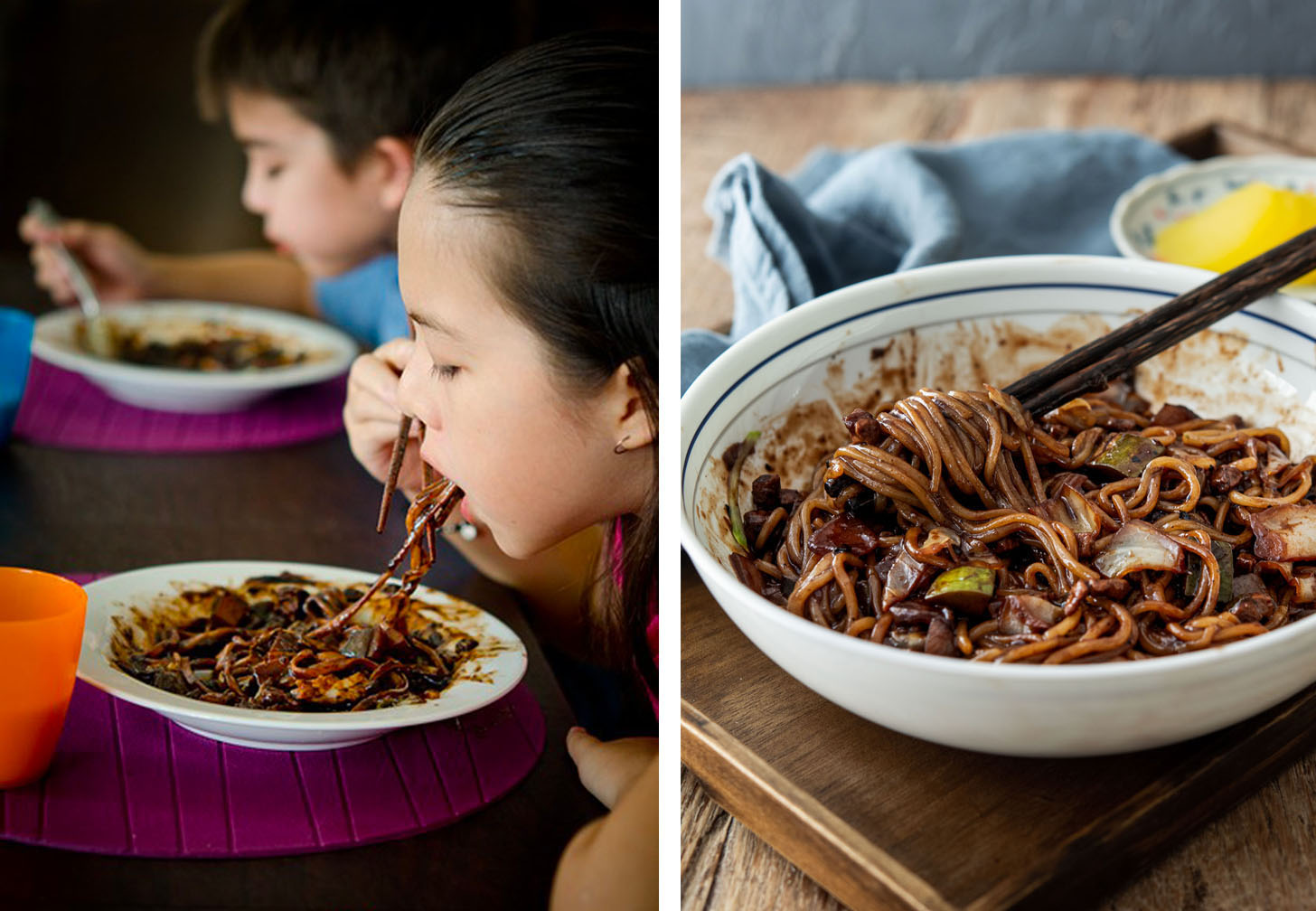
Related Recipes
Enjoy these noodle recipes featuring popular dishes from Hong Kong, Japan and Korea.
- Yaki Udon (Stir-Fried Udon Noodles)
- Hong Kong Pan-Fried Noodles
- Gochujang Noodles
- Nangmyeon (Korean Spicy Cold Noodles)
- Japchae (Korean Glass Noodles)
Love this recipe? Rate it and share your experience in the comments below! On Instagram? Tag me to showcase your creation. For more delicious recipes, subscribe to our newsletter!
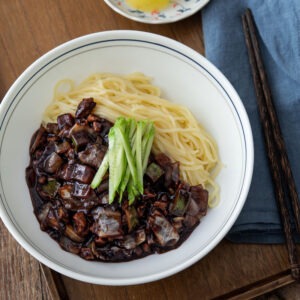
Best Jajangmyeon (Korean Black Bean Noodles)
Recipe Video
Ingredients
- 4 servings jjajangmyeon noodles, fresh or dried noodles
- 5 tbsp Korean black bean paste (chunjang)
- 4 tbsp oil
- 2 tbsp lard, or oil
- 1/2 cup chopped Asian leek, or green onion
- 2 tsp sugar
- 1/2 lb pork, chopped into small pieces
- 1/4 small cabbage, chopped
- 1 small onion, chopped
- 1/2 zucchini, chopped
- 1 tbsp oyster sauce
- 1 1/2 cup water
- 1 tsp chicken bouillon powder
- 1 tbsp cornstarch , mixed with 3 tablespoon water
- 1/4 cucumber, sliced to matchsticks to garnish, optional
Instructions
For Jajangmyeon Sauce
- To pre-fry Korean black bean paste (chunjang), heat oil in a wok over medium-low heat, and add chunjang paste. Stir-fry for 2-3 minutes. Use a fine mesh strainer to scoop the paste onto a small plate and set aside. Discard the oil and clean the wok.
- Heat lard in the wok over medium-high heat. Add the leek and sugar, stir-frying until the leek is slightly caramelized. Add pork and cook until no longer pink.
- Stir in cabbage and onion, cooking until slightly softened. Add zucchini pieces and toss. Mix in the reserved chunjang paste and oyster sauce, ensuring that all meat and vegetables are coated evenly.
- Pour in water and chicken powder, stirring well. Bring the sauce to a boil and cook for 3 minutes. Add the starch slurry and cook until the sauce thickens.
For Noodles
- Meanwhile bring a pot of water to boil. Add the noodles and cook according to the package direction, and drain. Be careful not to overcook them.
- Place a portion of noodles in each bowl and ladle the sauce over them. Garnish with optional cucumber matchsticks, if desired. Alternatively, you can serve the sauce over cooked rice, creating a dish known as jjajangbap (짜장밥).Note: Jjajangmyeon is traditionally accompanied by pickled radish slices. However, a modern twist involves pairing the dish with green onion kimchi (pa kimchi), which creates a delightful combination.

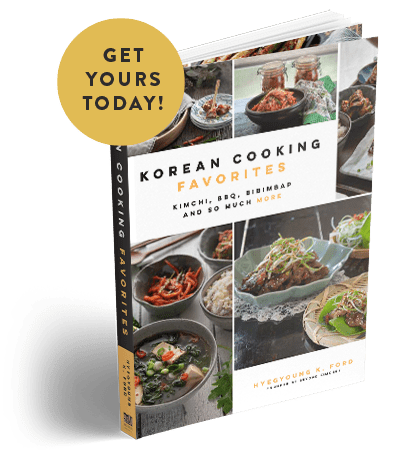
I’m just wondering, what do Korean people do who are celiac or sensitive to gluten? I see many recipes that call for wheat noodles which I need to avoid. Is best substitute, sweet potato starch noodles or something else?
Many people choose rice noodles as a substitute for wheat noodles.
Popular recipe and I can see why! Just delicious. I’m lucky to have a great again market within a few miles so getting ingredients is easy. Lots of fun learning what to do with them.
Holly, your site is a life saver. I first had Korean food in 1962 when I lived in Korea for three years as a US military dependent. Then I went back in 1967 as a Latter-day Saint missionary for 2 1/2 years. I’ve eaten a lot of 짜장면, but this is the first recipe I’ve found that reminds me clearly of those days long ago. (Of course, after so many years, perhaps my taste buds are forgetting what things tasted like!) Thank you for this recipe. Like all of the others that I’ve tried, this is great.
Hi James
Thank you for sharing your recollection of Jjajangmyeon and your time as a missionary. Which mission did you serve in? I had the opportunity to serve in Busan for the church in the early 90s. It’s hard to imagine what your experience must have been like in the 60s, as it was even before I was born. Your comment has brightened my day. Thank you for sharing.
Made this for my Korean wife today because she had been complaining about missing Korean food. I’m not the best in the kitchen, grilling is more my thing but this recipe was so easy to follow and turned out great! Thank you so much for making this website can’t wait to try more of your recipes.
Side note – the one thing she had to say that could have made it better was that it didn’t taste as strong as she is use to. I’m guessing I should have used a bit more bean paste, any thoughts?
Hi John
It’s great to hear that this recipe went well. You are a wonderful husband to cook for your wife. Yes, you can add more paste to make the flavor more intense. Hope you get to try other recipes soon. Let me know if you have any question regarding any of my recipes. Thanks for the comment.
Actually it is not a “Chinese dish” they have a similar black noodle in China but it’s not started in China. Yes it is started by Chinese but it’s started in Korea by these Chinese who have migrated to Korea. When they migrated to Korea due to wars, freedom from communists and they wanted to leave a mark so their descendants can have something to call their own. That’s where Jjajangmyeon came to be and most Chinese folks hate this dish because it’s made by Chinese that fled their so-called great land. You cannot find jjajangmyeon in China probably if you find a Koreatown if it exists in China.
I had this for the first time today in a restaurant and I’m hooked! What a wonderful meal for a dreary, cold Winter day. I’m very happy to have found this recipe – I can’t wait to try it. Thank you!
Thank you for the recipe. I’ve been on a hunt for jjajangmyeon that tastes like those I had in Korea. I’ve tried many different recipes, but none had that particular flavor. I even rendered my own pork fat and used the lard to see if that was the secret, but it wasn’t. what do they put in Korea to give it that particular flavor?
Hi! My local supermarkets don’t sell the black bean paste 🙁 I could only get the black bean powder. May I know how do I cook with the powder form, please? Thank you very much!
I would look for the instruction on the package. If not, after frying the meat and vegetables, add the powder and give it a good stir, and pour water to barely cover everything in a pan. The mount of powder is really depends on how deep flavor you desire. You can always add more so I would start with minimum amount for the serving size that you are making.
How much do you thing the recipe would change if I omitted the pork and used something like tofu instead?
It won’t have the same texture but I believe it will still taste good. I would fry the tofu to crisp before you add to the sauce though.
Awesome! I’ll have to try making this soon 🙂
I can’t find any store that has black bean paste. I got all the ingredients except black bean paste. Is there a substitute for black bean paste?
I only got ottogi jjajang (3 minutes); I don’t know what to do, What should I do?
That is a ready-made sauce. You can just heat it up, and pour over noodles or rice and serve.
hi. is the sauce originally sour? i’ve bought one and cooked but it make my noodles become sour taste. so i not sure is the sauce rotten or what.
No, the sauce shouldn’t be sour. Did you check the expiration date?
Thanks for this recipe. Had this since I was in high school and just had a craving for this 10 years later. I really wanted to know how to make the sauce and didn’t want to resort to buying instant noodles.
My husband lived in Korea for a number of years, and loves Korean food. This is one of his favorite dishes. I’ve never tried it at home. Lotte supermarket in Falls Church has a restaurant that makes it. But now, I need to try!
I am so glad to see this recipe! I’ve been craving it for 8 years ever since my sister-in-law visited and made it for me. I can’t wait to get to cooking! Going to see what else I can find, I miss so much of my mother-in-law’s cooking.
Hope you get to find all the ingredients you need to make this recipe. It is one of the most requested noodle dish that my kids are asking for and even the grown-ups like it, too. Hope my recipe will turn out as good as your sister-in-law’s.
Hi … I have a couple of questions. I am american but I grew up in Killeen Texas which just happens to have a very large amount of Koreans in the area because we are right next the ft hood army base and because of the u s army having a base in Korea many army guys married korean women and brought them to the US. I am white but I love Asian food because I had so much good Asian food I could order anytime. I LOVE this dish, I was going to make myself some the other day and asked my husband to get the black bean paste and he brought back black bean garlic paste … Can I use that? Also I have tried to add oyster sauce in when I make Asian food and I really don’t like it in my cooking at home but I like stuff with it like brown sauce and moo goo gai pan … Is the stuff in the u a just bad or cod I be using it wrong … How much is normal for a dish and how do you add it in?
Hi Aubrey
Hmmm…, the black bean garlic paste might not bring the same result because of the strong garlic taste in the sauce. You can definitely try it, though. Some like to add garlic in the sauce. In any case, unless it is pre-roasted bean paste, try to fry the paste in the oil first to get rid of the bitterness.
For the Oyster sauce, I am not sure if I understand your question right, but adding a little bit of oyster sauce can enhance the flavor of this noodle dish. For most other Asian dish, you don’t want to overuse it, too. It is quite salty and not the healthiest condiment. I would say about 1 tablespoon per 4 serving recipe, but it can vary depends on the dish you are making.
I just made this for dinner but I’m not really sure what it’s supposed to taste like since I’ve never tried it before. Is jjajangmyun supposed to be sweet? Mine was a bit bland and the only flavour I could taste was salt. Is it because I didn’t put enough black bean paste?
Jjajangmyun has mild yet distinctive its own flavor from the black bean paste. It is not spicy and can be very slight sweet but not much. If yours is salty, I wonder if you used the right kind of black bean paste. Did you use Korean style black bean paste?
This recipe was easy and simple to follow which it made it very helpful. The final product of this recipe did not turn out to be like the professional picture. We had to substitute some ingredients like the Korean black bean paste with Chinese black bean sauce. The noodles were also substituted with spaghetti because it was something that we could find at our local supermarket. These substitutions didn’t really change the recipe that much but the color of the sauce was different. The color of our dish turned out brownish but that was due to the paste sauce we used. Even though we had those substitutions, the recipe turned out really good and it also taste very good. If I had to redo this, I would like to have slimmed down some of the portions of the vegetables because it was just too much. I would also like to use Asian noodles and the Korean brand black bean sauce instead to see if it would have tasted any differently. The final product consists of noodles on the bottom with the black bean sauce mixed with vegetables and pork layered on top. To top off the dish, we had fresh slices of cucumber. I would like to recommend this recipe to another person because it was a easy recipe that anyone can follow and our final dish turned out amazing.
This recipe was pretty awesome. The instructions were easy to follow. The final product looked really close to the pictures on here and it tasted really good. There are some parts where we had to change the amount of stuff we had to put in, for example the amount of black bean sauce, there wasn’t enough black bean sauce to coat the noodles so we added a little bit more in. In the end it had a more of the color that is usually seen with jjajangmyun. It looked brown and really sticking and gooey looking, just the way I like it. This recipe was pretty good, nice and clear instructions and good amounts of stuff to make it, the only thing is that we changed the amount of black bean sauce.
This recipe was really helpful and it even provided pictures on the website on each step, so it made it even easier to follow. Although we followed the final product, our picture didn’t turn out so much like the professional picture, which is okay. It tasted really good and my friends said it tasted like their parents’ jjajangmyun!
We altered the noodles and the brand of the black bean paste because we couldn’t find the Korean brands of the noodle and paste. We went went Chinese black bean paste and replaced the Korean noodles with spaghetti noodles because we could get that at our local food market. We used half wheat spaghetti noodles and white noodles. It turned out pretty well, although our color wasn’t the same as the picture. Our toppings and everything were more brownish than blackish. Either way, once again, it was delicious.
What I would do differently is maybe just go for the Korean brand ingredients, if it wasn’t for the fact that I lived far from the Korean market and so on. I would also measure the toppings that we used more, instead of rushing it and going with what looked right in my eyes since it’s hard to measure how much cabbage we could have used with me eyes.
This is what the final product looked like: noodles good, and the toppings were overflowing. Cucumbers tasted good as well.
I would always recommend this recipe to someone. Just because I couldn’t do it, doesn’t mean that someone else couldn’t.
If you use spaghetti noodles, I think you really miss much of what makes the dish taste so good. The noodles need to have that chewy, firm taste. Two Korean fresh noodle brands that work pretty well for me are: Assi and Choripdong.
And actually, I’ve used fresh lomein noodles (brand Twin Marquis) with good results.
You can get Korean black bean paste online from hwww.mart.com — search for ‘black bean paste’ there. I think the brand I used was Haioreum.
in my previous post, change my typo from hwww.mart.com to http://www.hmart.com
Had the Chinese jajiangmian on a side street in Taipei Taiwan, and it was unforgettable even after several decades!
I made this last night, but used clear noodles I had purchased for another recipe (which I now cannot find!). I was trying to get rice noodles originally, and these had beans and peas as the ingredients. ??? In any case, it was very good. Next time, I’ll make it spicier, and replace the potatoes with something else. I’m also going to try to find authentic bean paste at the Asian grocery store. The only kind I found in the regular grocery store was Kikkoman brand.
I am glad that this recipe turns out well with clear noodles. Making it spicier sounds great, too.
Dear Holly, I love your blog! There is an HMart in my area. What aisle/section of the store can I find the Chinese black bean paste? I have asked a couple of workers there and it seems they really don’t know where things are. Thanks!
Black bean pastes should be in a condiment aisle where you see Korean pastes. Korean style black bean paste should be next to Korean soy bean pastes, and the Chinese black bean pastes are usually displayed across the aisle. I have seen Korean black bean pastes that are already pre-roasted so that you don’t need to fry-up to get rid of the bitterness. Have a fun shopping!
This looks so good. I found you on Pinterest and having never even had this dish, I can’t wait to make it. How many ounces of noodles serves 4?
Thanks!
Thank you !
I think you nailed this recipe. Was looking around for a good jajang myun recipe.
Tried one from a different site and it was pretty off.
Your recipe captured the flavors and textures I remember. I used cube bellies for the meat and substituted potato starch in place of the cornstarch to avoid that chalky taste that cornstarch sometimes seems to add..
Hello~ i cant eat pork so can i change it to meat or anything else?
You can try with ground beef.
Hi Holly!
I am dying for some jjajangmyun – have been craving it. But, I am now eating vegan and am hoping to adapt it to a more oil-free vegan style by omitting the oyster sauce and pork. But Is the oil absolutely needed? I plan on sautéing the vegetables in water, like I normally do, but is the black bean paste absolutely needing to be sautéed with oil?
Thanks so much! Can’t wait to try!
I would recommend you to use the powdered form of black bean instead of paste. With the powder you don’t need the sauteing. You can make this noodle into vegan dish as you like. If you can’t find the powder, you will need to saute in oil to get rid of the bitterness. You can boil, of course. But it won’t taste as good. A little bit of healthy oil like grape seed oil or canola oil will make the dish more flavorful.
I used black bean paste that was labeled: “Black Bean Paste / Roasted” (Brand was Haioreum). I assumed it had been pre-roasted so I skipped the step where you sautee the black bean paste and the result tasted fine to me.
Hey I have a question..is jjanjgmyun supposed to be sweet? is salt not required?? sorry too many questions lol 😀
Jjajangmyun is not sweet. The black bean paste itself has plenty of salt in it but you can always add some salt for your taste.
Thank you for posting this! My husband and I lived in Korea for 4 years, and jjajangmyun was and still is one of our favorite dishes. I hope you don’t mind that I linked your recipe on our own blog! We were so happy to try this out 🙂
Great recipe, thanks! Made it today and it was absolutely delicious. Will make it again soon for sure.
I really love korean food,but i live in india.do u know of any way i could lay my hands on the bean paste u mentioned?
You can use Chinese black bean paste if you have access to Chinese groceries.
Very good recipe. I love Jjajangmyun 🙂
When I was an undergrad, one way I paid for school was working as a waiter at a popular Chinese restaurant. Every evening after we finished dressing and prepping our stations, the head chef (he was Korean) would make the staff meal. One day he made Jjajangmyun and it was heavenly. I requested this again and again but it never appeared on the staff menu again from him. I never saw this again until I just happened upon your site.
I made it last night and introduced it to my children. It is not often we find something that stops the chatter at the dinner table. The only thing we heard was slurping sounds. And yes, there were many black-rimmed smiles.
Thanks
So great to hear your children liked the noodles!
As always, your recipes never disappoint! I made this for dinner last night and my husband (who spent a number of years in Korea) said, “I can’t believe can cook like this and you’ve never been to Korea”. That is a compliment to you, Holly; your step-by-step instructions make it an easy dish to prepare. The distinctive black bean flavor with the texture of the noodles makes it addictive. Leah Baik is right—an egg on top would have been fabulous, but we enjoyed it without. I love your recipes, Holly. Thanks for sharing.
Nancy, I am so happy to hear you made this noodles and your husband complimented. Thanks for your sweet comment. I appreciate it.
I love Jjajangmyun. I first had it when I was in Hawaii for my studies. But when I moved back to Malaysia, all I could find was those instant noodle kind. And for years that had been the only Jjajangmyun I get to eat in Malaysia. Then I went to Korea last year and I realized the instant noodle kind does not even come close to the ones I ate in Korea. I actually ate it a couple nights in a row as to get as much Jjajangmyun as I can before coming back to Malaysia. Thank you for sharing the recipe. Now I can go get the ingredients and make my own Jjajangmyun at home. Thank you so much.
I love that this simple, savory meal is considered a special treat in Korea! Black bean sauce is one of my favorite flavors. I can’t wait to try this.
This is one of my favorite Korean food!! Yay for the authentic recipe. Thanks Holly!
When I was a child, I could not eat enough of this! I still love eating Jjajangmyun!
My kids love jajangmyun too!! Yours looks great!
these look absolutely beautifully amazing. Must find some free time to make this…
YUM! A recipe for jjajangmyeon…so exciting as we haven’t had this since leaving Korea for fear that any versions not be the same as we’re used to. This one looks pretty damn authentic. Thanks!!!
I’ve never had the Korean version, looks good and I hope to try it one day. 🙂
Oh, I love jjajangmyun, and your photos are absolutely mouthwatering! I just don’t eat it very often since it’s stuck in my mind that it is not healthy food…especially with the step of frying the sauce in oil. Actually, I’ve always been curious about this frying step; if the point is to cook the paste at high temperature (as would be the case with the oil-frying) to remove the bitter taste, couldn’t this oil-frying step be omitted and instead replaced with just boiling the sauce (also high temperature cooking) at a later step, without adding the original frying oil? Or is there something about this oil-frying technique that I am not understanding? I have tried making jjajangmyun with my boiling idea (no frying), and I did not notice a bitter taste. But even though it tasted good and was a little healthier, I felt guilty for not making it the traditional Korean way. Can you help me understand this frying step a little better?
Hi Erica
As you know, the reason we fry the paste in oil is to remove the bitterness and the rawness from the wheat flour that had been added to the paste. The frying in oil also help create some nutty flavor in the sauce as well. You can certainly use boiling method but the overall flavor of the sauce won’t be as tasty. You know fat makes the flavor.
If you go to the popluar Jjajangmyun restaurants, chances are they will use lots of shortening or even lard to fry their paste to make the sauce. Some even add MSG to bring more flavor. For that reason Jjajangmyun is known for unhealthy. Although I grow up eating restaurant Jjajangmyun often, I don’t like to feed my family the noodles made with unhealthy fat. You can make the dish a lot healthier at home. (However I do have the occasional craving of the old time restaurant flavor though)
As you follow my recipe, you fry the paste in oil – the paste doesn’t soak up the oil much, then drain the most oil except just a little to fry the rest of the ingredients. Use healthy oil such as grape seeds or canola, and it shouldn’t be too bad.
I hope I answered your question alright.
Thanks, Holly, yes, your explanation is so nice! ^_^ I guess I have been shy of trying the frying step, but with your helpful guidance maybe I will try it sometime at home. Have a great rest of the week!
Mmmmm! Yes! I prefer Jjajjangbap with a fried egg on top, but either way it’s so good.
I can hardly wait to try this! I just discovered your blog about 2 or 3 weeks ago, and absolutely love your dishes AND your pictures. You make it soooo easy to do South-Asian/Korean food right at home. I cannot say thank you enough!
Hello! Would you like to share your recipes on http://whenangelscook.com? Check it out 🙂 already great presence on FB, twitter and Pinterest – http://pinterest.com/gabrielle8008/when-angels-cook/ – would love to see your recipes 🙂 – it is new and will grow because of you! It would be great to have you and your recipes on board.
Gosh, this has such terrific color! And the flavors sound wonderful – I love black bean sauce. And anything with noodles in it certainly gets my attention. 😉 Great dish. And when I eat it, I know already I’ll be making slurping noises!